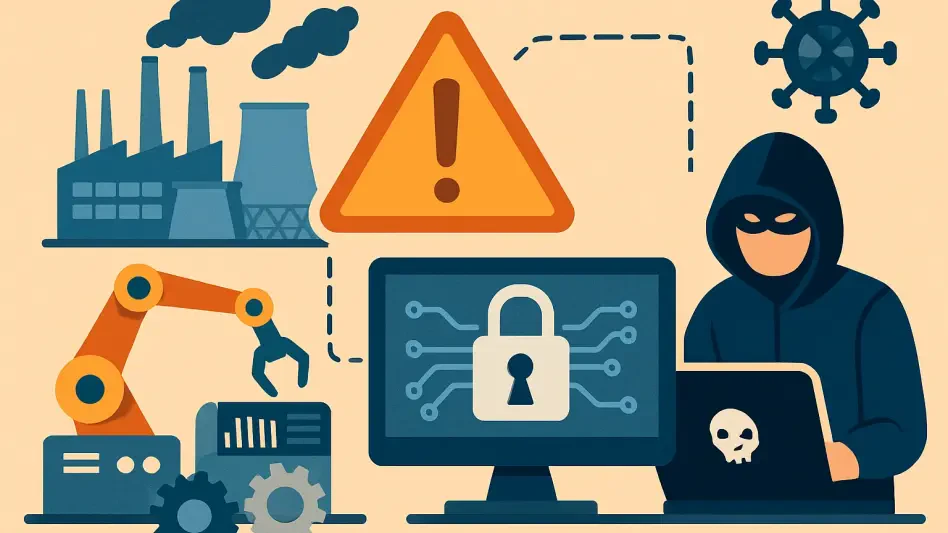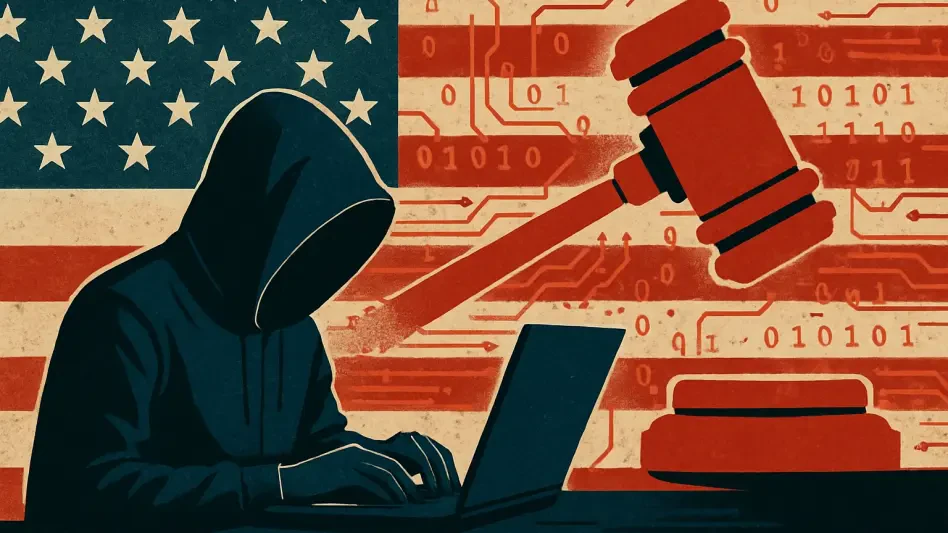What happens when the invisible systems powering our daily lives—think power grids, water treatment plants, and sprawling factories—become prime targets for cybercriminals? A chilling reality has emerged in the industrial sector as Honeywell, a titan in automation technology, recently confronted severe vulnerabilities in its Experion Process Knowledge System (PKS), a platform that serves as a linchpin for critical infrastructure worldwide. These flaws were so dangerous they could have handed attackers the keys to chaos. The stakes couldn’t be higher, and the urgency to act is palpable.
The significance of this story lies in the sheer scale of reliance on systems like Experion PKS. Used across energy, utilities, and manufacturing, these platforms are the backbone of modern society, yet they remain alarmingly susceptible to cyber threats. With attackers growing bolder, exploiting even isolated network segments, a single breach could disrupt entire regions, halt production, or endanger public safety. This isn’t just a tech issue—it’s a wake-up call for industries and governments alike to prioritize cybersecurity before a catastrophe unfolds.
The Silent Engine of Industry: What Is Experion PKS?
At the heart of countless industrial operations sits Honeywell’s Experion PKS, a sophisticated system designed to automate and manage complex processes. From regulating power plant outputs to ensuring seamless assembly lines, it’s a trusted tool in high-stakes environments where precision is non-negotiable. Its global footprint means that any glitch or exploit could ripple across borders, affecting millions who depend on these services without ever realizing it.
However, with great power comes great vulnerability. Industrial control systems (ICS) like Experion PKS are increasingly targeted by cybercriminals who exploit outdated protocols or remote access weaknesses. The convergence of operational technology with internet-facing networks has only widened the attack surface, turning what was once a niche concern into a pressing global risk. Honeywell’s recent scramble to patch critical flaws highlights just how fragile this digital foundation can be.
Cracks in the Armor: The Flaws Exposed
Digging into the specifics, researchers at a leading cybersecurity firm uncovered six alarming vulnerabilities in Experion PKS, ranging from critical to high-severity, with one medium-severity issue in the mix. These flaws, primarily tied to the Control Data Access component and the Open Platform Communication (OPC) protocol, opened doors to devastating exploits. Remote code execution stood out as the gravest threat, potentially allowing attackers to hijack systems and manipulate operations at will.
Other issues weren’t far behind in their destructive potential. Two high-severity bugs, alongside the medium-severity one, could enable denial-of-service attacks or cause erratic system behavior. Imagine a power grid shutting down or a chemical plant malfunctioning—these aren’t sci-fi scenarios but real possibilities if such vulnerabilities are left unaddressed. The technical details may be complex, but the bottom line is simple: a breach here could spell disaster for entire communities.
A Hacker’s Playground: How Easy Was the Exploit?
Dmitry Skylar, a leading expert in industrial control systems, didn’t mince words when describing the root of the problem: inadequate identification and authentication in network protocol handlers. “Exploitation requires only access to an isolated network segment,” Skylar explained, painting a grim picture of how minimal barriers stand between attackers and critical systems. This isn’t a case of needing sophisticated tools or insider knowledge—just a foothold in the right network could be enough to cause havoc.
The broader cybersecurity community echoes this concern, noting that platforms like Experion PKS are used so widely that a single flaw can impact countless organizations. The ease of exploitation isn’t just a technical footnote; it’s a glaring signal of systemic issues in industrial cybersecurity. Honeywell’s rapid response with patches is a step in the right direction, but it begs the question of how many other flaws remain hidden in similar systems across the globe.
Real-World Stakes: Why This Matters Beyond Tech
Consider the fallout from past industrial cyberattacks as a stark warning. Incidents like the 2017 WannaCry ransomware attack, which crippled manufacturing and infrastructure worldwide, show how digital threats can translate into physical disruption. While Experion PKS wasn’t directly tied to such an event, the potential for remote code execution mirrors the tactics used in those attacks, where attackers gained control over critical operations with alarming speed.
The ripple effects extend far beyond a single facility. A compromised system in a utility sector could cut power to hospitals during emergencies, while a manufacturing shutdown could derail supply chains already strained by global demands. Cybersecurity isn’t just an IT department’s problem—it’s a societal one, demanding attention from policymakers, industry leaders, and even the public who rely on these unseen systems every day.
Fortifying the Frontlines: Steps to Secure the Future
Honeywell moved swiftly, urging all Experion PKS users to apply the latest patches without delay, a critical first line of defense against potential exploits. But patching alone isn’t enough in an era where cyber threats evolve daily. Organizations must go further, starting with comprehensive audits of their industrial systems to uncover outdated software or lingering vulnerabilities before attackers do.
Beyond internal measures, a multi-layered approach is essential. Segmenting networks to limit access, enforcing robust authentication protocols, and deploying real-time monitoring tools can drastically reduce risks. Collaboration also plays a key role—partnering with third-party researchers and vendors ensures a broader net for catching threats early. These steps require investment and commitment, but the cost of inaction could be far greater, measured not just in dollars but in disrupted lives.
In reflecting on this critical moment, it’s evident that Honeywell’s response to the Experion PKS vulnerabilities marked a pivotal effort to avert potential disasters. The patches addressed immediate dangers like remote code execution and denial-of-service risks, stemming from flaws in network protocols. Yet, the incident underscored a persistent fragility in industrial systems that demanded ongoing vigilance. Looking ahead, the path forward required industries to embed cybersecurity as a core priority, adopting proactive measures like audits and network segmentation. Partnerships with researchers promised to uncover hidden risks, while continuous monitoring offered a shield against evolving threats. This episode served as a reminder that protecting critical infrastructure was not just a technical challenge but a collective responsibility, urging sustained action to safeguard society’s foundation.








